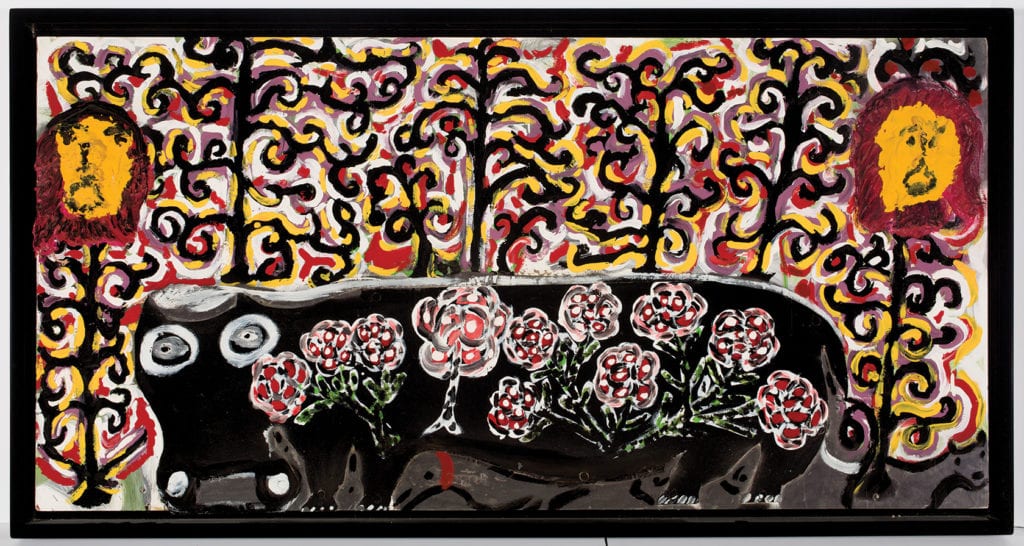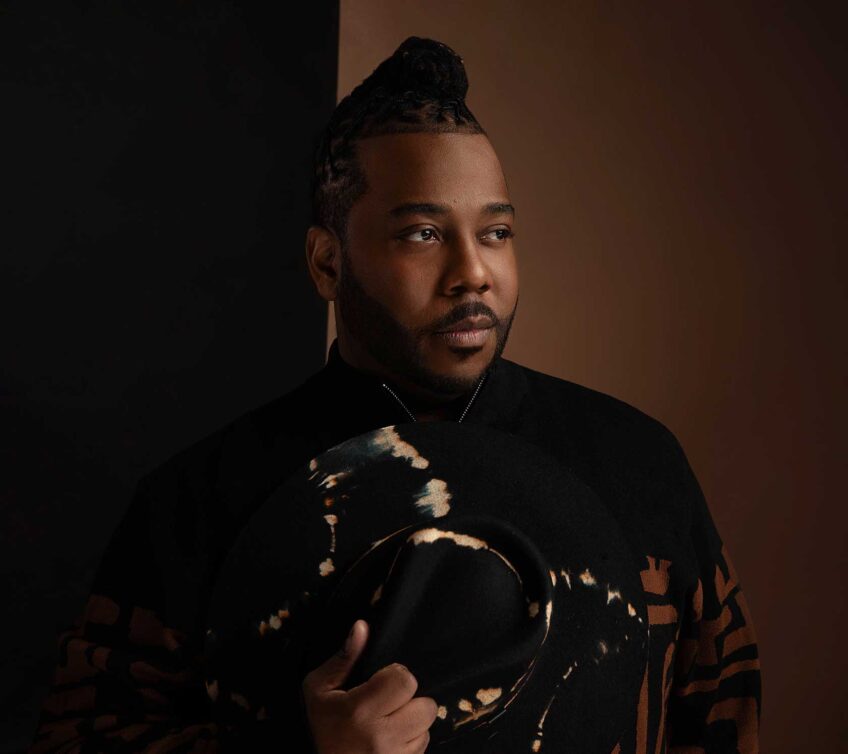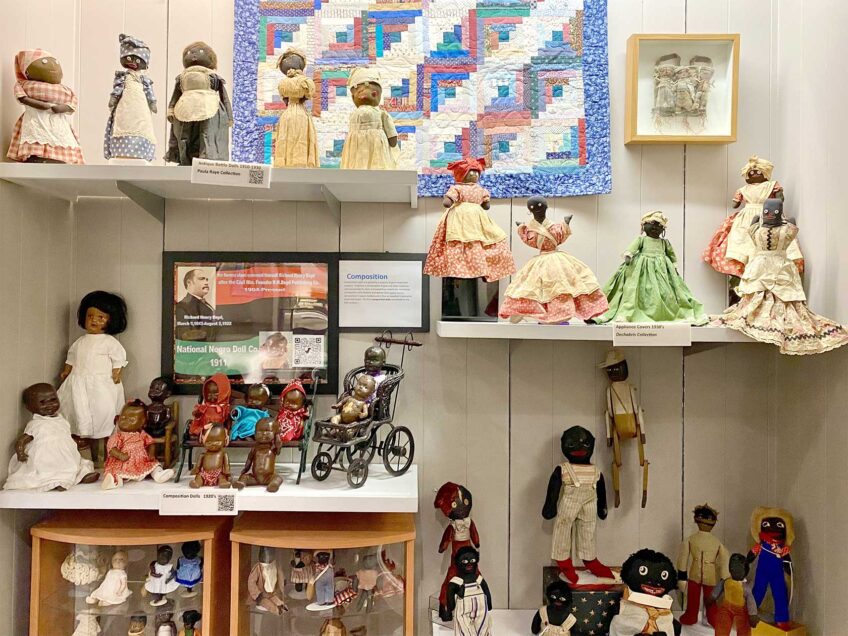
Andrew and Linda Safran’s interest in American outsider art began with their acquisition of William L. Hawkins’ painting “Hippo” in 1989. It was the “simplicity and the vibrancy” of the large-scale image — a black hippo painted against a striking red background — that first appealed to them. It made them “feel happy without feeling compelled to search for hidden meaning and intent,” wrote Linda Safran via email.
That acquisition led the couple on an 11-year journey to learn more about Hawkins, to study his work, and to begin collecting this genre of art known as outsider art. The term “outsider art” was first coined by French painter and sculptor Jean Dubuffet in the late 1940s as “art brut” (meaning “raw art” or “rough art”) because it was produced by everyday people who did not have formal art education — who were, in other words, self-taught.

William L. Hawkins “Hippo.”
Enamel on masonite. Tufts University Permanent Collections. Gift of Andrew and Linda Safran.
Photo: courtesy of Tufts University Permanent Collection
In 2017, the Safrans made a gift to Tufts University of 38 pieces of artwork, including paintings, sculptures, and drawings, from their private collection. The exhibit, titled “Expressions Unbound: American Outsider Art from the Andrew and Linda Safran Collection,” features 19 artists from the American South, the Northeast and the West Coast, and is currently on display through Dec. 16 at the Tisch Family Gallery at Tufts University’s Aidekman Arts Center.
“Expressions Unbound” is the first major contribution of American outsider art to the school and the largest single-collection gift of work predominantly by African American artists in the University’s 166-year history.
The Safrans have strong ties with the university. Andrew Safran graduated from Tufts and the Fletcher School of Law and Diplomacy, and the couple’s daughter Elizabeth is a 2009 graduate. Linda Safran wrote, “We have long admired the University’s commitment to arts education programs and we are thrilled that this gift will not only enhance this programming, but, will also become an interdisciplinary resource for further study.”
Dina Dietsch, director and chief curator of Tufts University art galleries, ushered in the exhibit when she joined the faculty in 2017. The artwork is “about the materiality and the material sensibilities of the artist,” she said, speaking by phone to the Banner.
“There’s a lot of found materials, but there’s this texture and rawness to the paints. Some of the paintings are on doors and windows and you really can see all that,” Dietsch said. “What becomes very obvious and clear is that these are artworks that come from somebody’s lived daily life, and that it doesn’t come out of some sort of preconceived notion or a known art discourse or education. It’s something that artists make for the world around them, which is really powerful.”
Self-taught African American folk artist William Lawrence Hawkins was born in 1895 in rural Kentucky and began to draw and sell his art in the 1930s. However, it wasn’t until the mid-to-late-1970s that he became a painter, and only when the artist was past 80 years old did he begin receiving acclaim for his art.
In addition to Hawkins, “Expressions Unbound” features several other self-taught Southern artists, including Thornton Dial, Bessie Harvey, Purvis Young and Mary T. Smith, who created art simply for their own pursuit, from whatever materials they could find. Dial, who spent much of his life as a metalworker, developed a unique style and is best known for his sculptural objects and wall-relief assemblages made using discarded metal, plywood, plastics, rope and old clothes. His colorful and bold 1989 painting “A Hippo Got a Right to the Tree of Life” is featured in the exhibit.
Bessie Harvey, born in 1928 in Georgia, was inspired by visions of the spiritual in nature and began creating sculptures using tree roots and branches. She developed her own creative art practice based on her deep religious faith and as an outlet from marriage and motherhood — she had 11 children, 28 grandchildren and three great-grandchildren. Harvey’s sculptures are typically decorated with paint, beads, shells, cloth and other found materials. Her 1985 sculpture “The Spirit of Love,” made of wood, glass and twine is featured in “Expressions Unbound.”
Linda Safran hopes that gallery visitors, who may not be familiar with these artists, will have “an unforgettable experience looking at, learning about and enjoying the contributions these artists have made to American art.” She added, “We hope that everyone will appreciate the unbound passion expressed by all of these artists through their artistic creations.”






![Banner [Virtual] Art Gallery](https://baystatebanner.com/wp-content/uploads/2024/04/NJ-H_1-713x848.jpg)